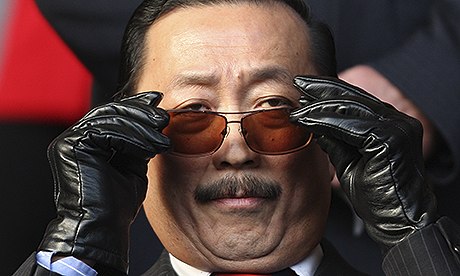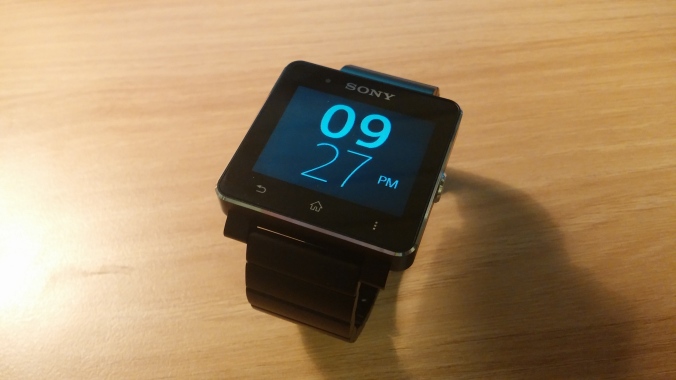My second time viewing The Desolation of Smaug – in the HFR version – hasn’t caused me to change my views which were spelled out in the review. I never bemoaned the length of the three movies in Peter Jackson’s Lord of the Rings adaptation, and found An Unexpected Journey quite enjoyable despite some issues. But Desolation‘s problems outweigh its positives, and here I’m looking to elaborate on them in greater detail, full of spoilers from top to bottom.
In Tolkien’s The Hobbit, Bilbo and the dwarves’ meeting with Beorn, as well as the Mirkwood section ending with the barrel ride escape from Thranduil form an important part of the overall text. For this current trilogy of movies, Beorn is pretty much set up to be what the Ents were in LOTR: a mysterious and powerful agent of nature whose reservations about aiding the protagonists are overcome by a sheer hatred of orcs. The chapter in the book, ‘Queer Lodgings’, is by turns funny, sinister, dramatic and exciting, and its standout nature is testified by fan devotion to Beorn’s character throughout the years. But whereas The Two Towers devoted considerable amount of time to Treebeard, Desolation has little more than 5 minutes for the shape-shifting bear-man. He has a bigger role to play, I’m sure, in the third movie, but having featured so cursorily here I’m worried that casual audiences will struggle to remember who he is this time next year.
The tribulations in Mirkwood are similarly curtailed. In the book, the hallucinations the dwarves suffer in the forest are terrific stuff: Thorin’s company, lost and bewildered, are tempted and taunted to slumber by the smell of delicious feasts and the sounds of merry-making, only to wake up covered in webs and being prepared for supper by massive spiders. In terms of action this is probably the most visceral part of Tolkien’s story, featuring as it does some serious psychedelia, horrible creepy crawlies and Bilbo’s ring-aided heroics. The movie only deals with the hallucinations very briefly, and the capture by the spiders isn’t put in any context. We don’t see the dwarves becoming enchanted and then exhausted by the spectral partying of the elves, and we don’t witness Bilbo’s desperation at losing sight of his companions. The whole ordeal is over in a matter of minutes and then the narrative segues into the imprisonment in Thranduil’s hall. Here, again, the movie doesn’t allow itself sufficient temporal room for the story to develop. Dwarves are thrown into jail, Bilbo figures out where the winery is, and everyone is out through the trapdoor in barrels and into the river in what seems to be less than a day in the movie’s time. Yet again the movie makes no attempt to portray what a difficult situation Bilbo is faced with, and to capture the perilous nature of Thorin’s quest.
The shortening of each of these three sections in itself isn’t a problem, but together they end up having a detrimental impact on Desolation. First, because these supposedly dangerous events begin and end without any sort of rhythm or momentum, you never get the sense that Bilbo and the dwarves are in any danger. Things happen so quickly that we are not allowed to take stock of what these scenes mean for our characters. Second, because so much stuff happens so soon, all crammed together, the second half of the movie seems particularly protracted. What seems to be the logical point for dramatic denouement in Desolation is brought more forward than Jackson probably intended, so that some of the later scenes in Laketown and especially in Erebor feel like they belong in the next movie.
This brings us to the biggest problem with Desolation: the Smaug scenes which round off the movie. There’s no doubt that the dragon is a phenomenal CG achievement, but there the positives end. The whole section in Erebor that starts with Smaug’s intial tentative conversation with Bilbo and ends with him flying off towards Laketown, shaking off the molten gold, is simply too long and tedious. It just goes on and on, first with Smaug’s famous monologue, and then an increasingly ludicrous chase/fight with the dwarves that test both our patience and the film’s credibility. Despite having been built up throughout as the most dangerous thing that one can possibly find in Middle-Earth, a being that destroyed the realm’s greatest kingdom singlehandedly, Smaug is unable to even singe a single strand of hair on any of the dwarves. He talks too much, wastes far too much time just faffing about, is easily distracted and doesn’t seem to be able to get his priorities straight. At first, when he’s sizing up Bilbo, Smaug seems very nimble for his size, yet when he has to chase the dwarves he suddenly becomes very leaden-footed. When the dwarves stage a comeback in the forges, Smaug mostly just stands around, looking at Thorin. At one point it got so bad I was reminded of the awfully incompetent giant snake in Dragon Wars. Our heroes, meanwhile, are constantly flung about by falling debris or collapsing platforms in an orgy of CGI; after the umpteenth narrow escape, you can’t help but feel weary and cynical at the lack of character agency and the repetitive digital action. At the end, after being thoroughly humiliated by the dwarves who are still just a firebreath away from total annihilation, Smaug chooses to leave Erebor to attack a settlement that’s some distance away. The whole thing isn’t so much against-the-odds as just downright illogical. Exacerbating the matter is the fact that Smaug acts so moronically, when he should be a mixture of Saruman, Gollum and the balrog: a huge, powerful and destructive force possessed of cunning and obsession, with a hypnotic voice that can seduce and destroy lesser beings. Tolkien’s dragons – Smaug in The Hobbit and and especially Glaurung in The Silmarillion – are pitiless, sadistic and psychologically manipulative bullies, delighting in the mental suffering of others and causing lasting, almost corrosive damage to the environment simply by their being. Their overwhelming physical strength isn’t what makes them so fascinating. Rather, it’s their malevolent intelligence, their devotion to the emotional ruin of foes, their gripping gaze and the ability to be far-seeing. Jackson’s Smaug looks great and has an appropriately mellifluous baritone courtesy of Benedict Cumberbatch, but he is overused to make the film’s last third longer and add to an already overflowing amount of action. The standoff between Smaug and Thorin’s dwarves has little of the invention and lightness of touch that so elevated Jackson’s set pieces in the LOTR trilogy. It’s dull, tired, rote and lacking in the rhythm and beat of, say, the Moria section in Fellowship of the Ring.
Making changes in the course of adapting a novel is perfectly fine. Making strident changes in the name of good cinema is fine, too. That’s what happened to the LOTR trilogy, and the results, as we know, were constructive and ultimately very successful. But in Desolation Jackson’s touch, previously so assured when it comes to Middle-Earth, appears to have faltered. Its unevenness – a rushed first hour followed by an interminable final third – hints at significant cuts made during the editing process, so perhaps we will get a more balanced movie with the extended edition. Desolation is the difficult middle movie, but compared to The Two Towers and its superlative Battle of Helm’s Deep, it’s significantly less enjoyable. The third and final movie in The Hobbit trilogy, There and Back Again, will at least have a large scale battle plus more of Beorn and Gandalf that we saw so little of here. I trust in Jackson to deliver and am still eagerly looking forward to December 2014, but it’s a shame that with the disappointing Desolation, The Hobbit isn’t going to be quite the perfect package that LOTR was.


